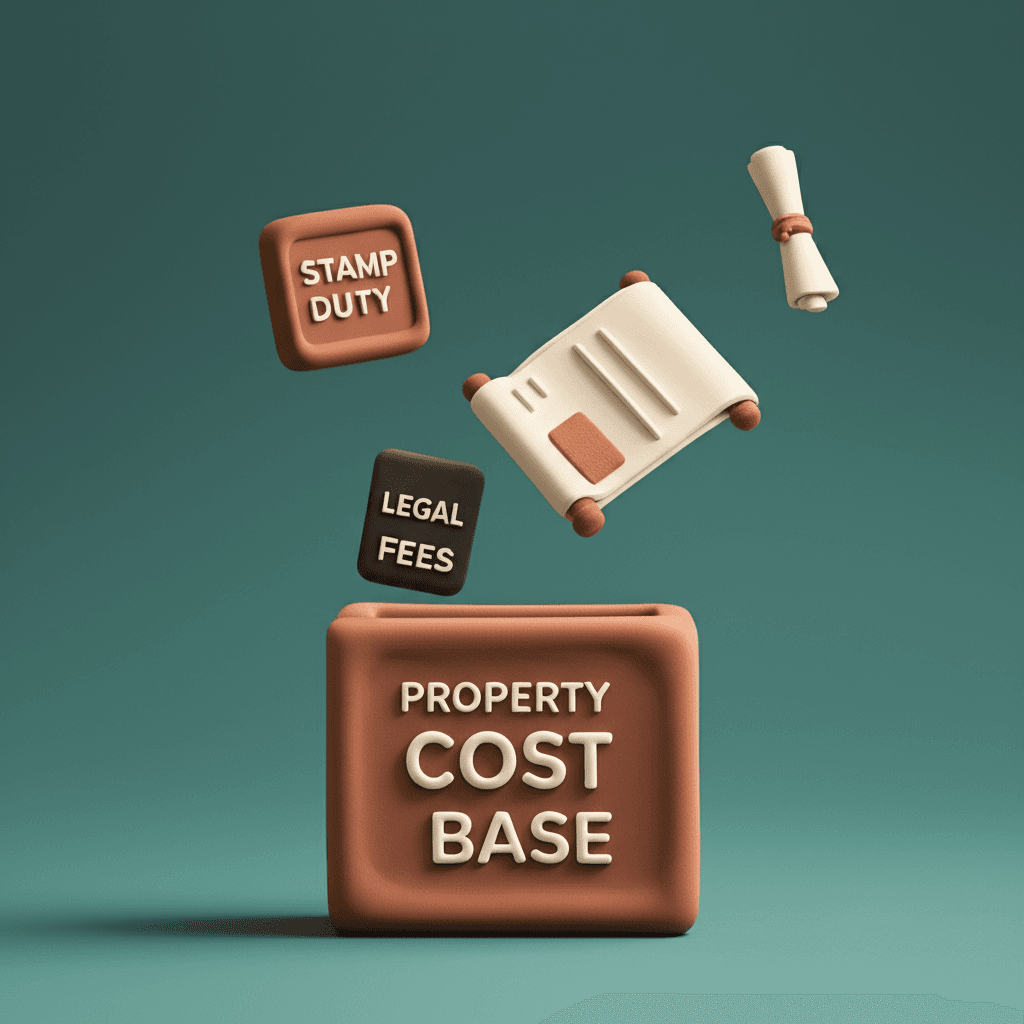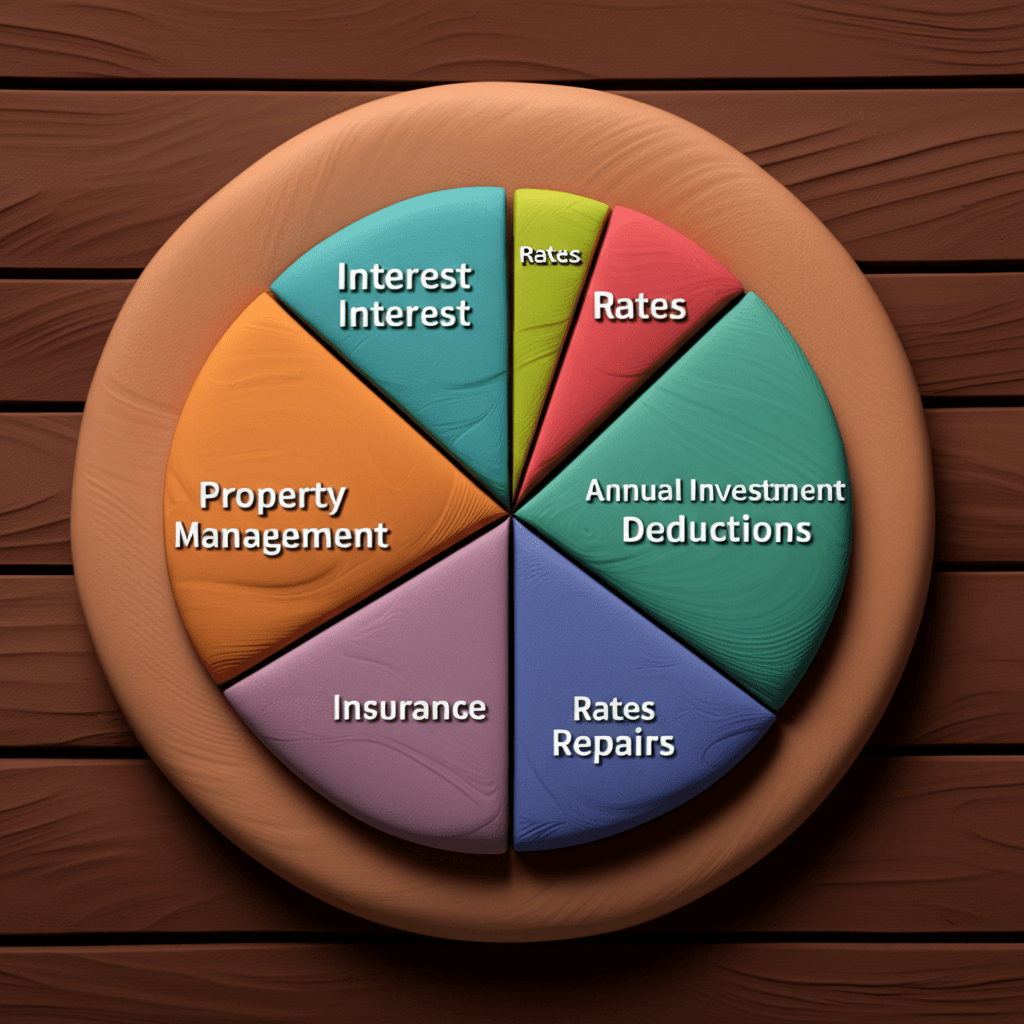The Ultimate Guide to Investment Property Tax Deductions in Australia
Uncover the claims the ATO scrutinises most. A detailed breakdown of tax deductions for buying, holding, and selling your investment property.

Introduction
Navigating the Australian property market is complex, but understanding your tax obligations as an investor is crucial for maximising returns. With the Australian Taxation Office (ATO) increasing its scrutiny on landlord claims, it's more important than ever to move beyond anecdotal "barbecue talk" and get the facts straight. Many investors miss out on legitimate deductions or, worse, make incorrect claims that attract costly audits.
This guide breaks down the property investment journey into three distinct stages—buying, holding, and selling—to clarify precisely what you can and can't claim. We'll explore whether an expense is an upfront deduction, an addition to your cost base for Capital Gains Tax (CGT) purposes, a claimable expense over time, or simply a myth.
Stage 1: The Buying Phase – Setting Up Your Cost Base
When you purchase an investment property, most initial expenses aren't immediate tax deductions. Instead, they form the property's 'cost base'. This is the total cost of acquiring the asset, which is used later to calculate your capital gain or loss when you sell. Meticulous tracking from day one is essential.
The deposit and the full purchase price of the property are the foundation of your cost base. These amounts are not deductible in the year of purchase but are critical for the CGT calculation upon sale.
For most of Australia, stamp duty is a significant expense that is added directly to your cost base. Likewise, the legal and conveyancing fees paid to a solicitor to manage the property transfer are also capital costs. There's a notable exception: in the ACT, this is called 'conveyance duty' and is an upfront tax deduction for investment properties.

This is a commonly misunderstood expense. If it's your first investment property, the buyer's agent fee is considered a capital cost and is added to the cost base. However, if you already have an investment portfolio, a portion of the fee may be deductible. If your buyer's agent provides specific, itemised advice on improving the income-generating capacity of your existing portfolio, that portion of their service can be an upfront deduction. The portion related to acquiring the new property remains a capital cost.
Costs directly associated with securing your loan are not part of the cost base. These are known as borrowing costs and include Lenders Mortgage Insurance (LMI) and loan application fees. These expenses are deductible, but they must be claimed over a five-year period. A pro-tip: if you refinance the loan within that five-year period, any remaining unclaimed balance can be deducted in full in that financial year.
How you treat this cost depends on the circumstances:
Unsuccessful Purchases: If you pay for an inspection on a property you don't end up buying, it's considered a 'sunk cost' and cannot be claimed anywhere.
Peace of Mind: If you commission the report for your own due diligence on the property you purchase, the cost is added to your cost base.
Bank Requirement: If the lender mandates a building and pest report as a condition of the loan, it's treated as a borrowing cost and can be deducted over five years.
A common myth is that you can claim travel costs related to your residential investment property. Since 1 July 2018, the ATO has disallowed all travel expenses for inspecting, maintaining, or collecting rent for a residential rental property. This is non-deductible and not added to the cost base.
Stage 2: The Holding Phase – Annual Operational Expenses
While you own and rent out the property, you will incur numerous ongoing expenses. Most of these are claimable as upfront deductions against your rental income in the financial year you pay them.
These are costs related to the day-to-day management and ownership of the property once it is available for rent:
Property Management Fees: All fees paid to a real estate agent to manage the property and tenant.
Council & Water Rates: The regular rates and charges from your local council and water authority.
Land Tax: State-based tax that is fully deductible in the year it's incurred.
Insurance: Premiums for landlord insurance and building insurance are immediately deductible.
Interest on Loan: The interest component of your mortgage repayments is typically the largest annual deduction for investors.

This is a critical distinction. A repair restores something to its original condition (e.g., fixing a broken window, repainting a damaged wall) and is an immediate deduction. An improvement makes something better than it was originally (e.g., renovating a whole kitchen, adding a carport) and is a capital works expense. These costs are depreciated over many years and added to the cost base, not claimed upfront.
If you own a strata-titled property, your regular body corporate fees are deductible. However, if a 'special levy' is raised for a major capital upgrade (e.g., replacing the roof, installing a new lift), this is a capital expense. You cannot claim this large, one-off payment upfront. Instead, you can only claim depreciation on the building upgrade it funded.
Stage 3: The Selling Phase – Calculating Your True Profit
When you sell your property, your focus shifts to calculating Capital Gains Tax (CGT). The goal is to accurately calculate your net capital gain by accounting for all relevant costs.
Costs directly related to the sale of the property are used to reduce your capital gain. These include:
Real Estate Agent Fees & Commission
Property Styling and Marketing Costs
Legal and Conveyancing Fees for the Sale
Mortgage Discharge Fees
These are subtracted from the sale price to determine your 'net sale price' before you deduct your cost base.
Many investors worry they have to "pay back" the depreciation they claimed over the years. This isn't entirely accurate. The total amount of building depreciation (capital works) you claimed while owning the property is subtracted from your original cost base. This increases your on-paper capital gain. However, because you're eligible for the 50% CGT discount (if you've held the asset for over 12 months), you still end up in a far better financial position. You received a 100% tax benefit on the deductions each year and only pay tax on 50% of the 'recouped' amount upon sale. It's effectively an interest-free loan from the ATO that enhances your cash flow for years.

The Golden Rule: Meticulous Record-Keeping
Your ability to make legitimate claims and minimise your tax bill hinges on one thing: substantiation. Keep digital copies of every document, including the original purchase contract, settlement statements (for both purchase and sale), loan contracts, and receipts for every expense. Using robust tools can help you track your portfolio's performance and expenses accurately.
Conclusion
Successfully managing the tax implications of property investment is about understanding the distinct rules for each phase of ownership. By correctly categorising expenses—whether as part of your cost base, an overtime deduction, or an immediate write-off—you can legally minimise your tax liability and improve your investment's cash flow. Always maintain detailed records and consult with a qualified accountant to ensure you remain compliant and make the most of your investment.
Ready to make smarter, data-backed investment decisions? Explore HouseSeeker's powerful Real Estate Analytics Hub to track market trends, analyse investment potential, and manage your portfolio with confidence.
Frequently Asked Questions
Can I claim travel expenses to inspect my residential investment property?
No. As of 1 July 2018, the ATO disallowed travel expenses for residential property investors to inspect their properties, perform maintenance, or collect rent. This applies to both buying and holding phases and is a common myth.
Is the entire fee for my buyer's agent tax-deductible?
Generally, no. For your first investment property, the fee is added to the cost base. If you have an existing portfolio, only the portion of the fee that can be specifically attributed to strategy and advice on your existing properties may be claimed as an upfront deduction. The component for acquiring the new asset is always a capital cost.
Do I really have to 'pay back' all the depreciation when I sell?
Yes and no. The building depreciation you've claimed reduces your cost base, which increases your capital gain. However, you benefit from the 50% CGT discount on that gain. This means you still receive a significant net benefit from claiming depreciation throughout the life of the investment, as it provides you with enhanced cash flow year after year.
